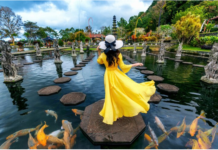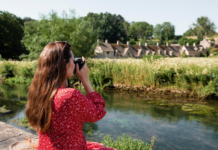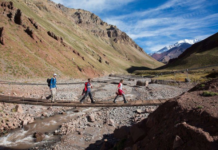Indonesia, a sprawling archipelago comprising over 17,000 islands, is home to some of the world’s most active and awe-inspiring volcanoes. Situated along the Pacific Ring of Fire, a horseshoe-shaped belt of seismic activity encircling the Pacific Ocean, Indonesia boasts more than 130 active volcanoes, making it a hotspot for geological enthusiasts and adventurers seeking to witness the raw power and beauty of volcanic landscapes.
The Diversity of Indonesia’s Volcanoes
Indonesia’s volcanic terrain offers a diverse range of experiences, from towering stratovolcanoes cloaked in mist to bubbling crater lakes nestled within lush rainforests. Each volcano has its own unique character and geological history, shaped by millennia of volcanic activity and tectonic movements.
Mount Bromo, located in East Java, is one of Indonesia’s most iconic volcanoes, renowned for its otherworldly lunar-like landscape. Visitors can hike to the rim of the crater and peer into its smoldering depths, where plumes of sulfuric gas rise from the vent below. At sunrise, the surrounding landscape is bathed in hues of orange and pink, creating a surreal and unforgettable spectacle.
Further east, on the island of Bali, Mount Batur offers a more accessible yet equally breathtaking volcanic experience. A predawn hike to the summit rewards adventurers with panoramic views of the island and its neighboring volcanoes, including the majestic Mount Agung. After witnessing the sunrise from the summit, hikers can descend to explore the crater’s rugged terrain and visit natural hot springs nestled at its base, providing a soothing end to an exhilarating ascent.
In Sumatra, Mount Sinabung presents a stark contrast with its recent history of frequent eruptions, which have displaced communities and reshaped the surrounding landscape. Despite its volatile nature, Mount Sinabung’s slopes are cloaked in fertile soil, making it an ideal location for agriculture. The juxtaposition of destruction and renewal underscores the complex relationship between humans and volcanoes in Indonesia’s dynamic volcanic landscape.
Cultural Significance and Resilience
Beyond their geological significance, Indonesia’s volcanoes hold profound cultural and spiritual importance for the country’s inhabitants. Many volcanoes are revered as sacred sites, believed to be inhabited by powerful spirits or gods. Rituals and ceremonies are often performed to appease these deities and seek protection from volcanic eruptions and other natural disasters.
For example, Mount Merapi, located near Yogyakarta on Java Island, is considered one of Indonesia’s most sacred volcanoes and holds great significance in Javanese culture. Despite its frequent eruptions, local communities continue to live in its shadow, relying on the fertile volcanic soil for agriculture and viewing the volcano as a source of spiritual guidance and prosperity.
In Bali, Mount Agung is revered as the home of the gods and plays a central role in the island’s Hindu rituals and ceremonies. Pilgrimages to the summit are made annually during important religious festivals, where offerings are made to appease the gods and seek blessings for the coming year. The volcano’s majestic presence serves as a reminder of Bali’s spiritual heritage and the resilience of its people in the face of natural adversity.
Challenges and Conservation Efforts
Despite their natural beauty and cultural significance, Indonesia’s volcanoes pose significant challenges to local communities and authorities. The threat of volcanic eruptions, lahars (mudflows), and pyroclastic flows necessitates constant monitoring and preparedness measures to ensure the safety of nearby populations. Efforts are also underway to educate communities about volcanic hazards and develop early warning systems to mitigate the impact of future eruptions.
Conservation efforts are equally crucial to preserving Indonesia’s volcanic landscapes and biodiversity. Many national parks, such as Bromo Tengger Semeru National Park in Java and Gunung Rinjani National Park in Lombok, have been established to protect these fragile ecosystems and promote sustainable tourism practices. These parks not only safeguard endemic flora and fauna but also provide opportunities for visitors to experience the natural beauty and geological wonders of Indonesia’s volcanic regions responsibly.
Conclusion
Exploring Indonesia’s Ring of Fire is a captivating journey into the heart of one of the world’s most dynamic geological landscapes. From the towering peaks of Mount Bromo to the sacred slopes of Mount Agung, each volcano offers a unique blend of natural beauty, cultural significance, and geological intrigue. As adventurers traverse Indonesia’s volcanic terrain, they are not only immersed in the raw power of nature but also witness the resilience and spiritual connection of the communities that call these fiery mountains home. Whether hiking to a crater rim at sunrise or learning about ancient rituals and traditions, the quest to explore Indonesia’s volcanoes is an unforgettable odyssey that unveils the enduring allure and complexity of our planet’s geological wonders.

























